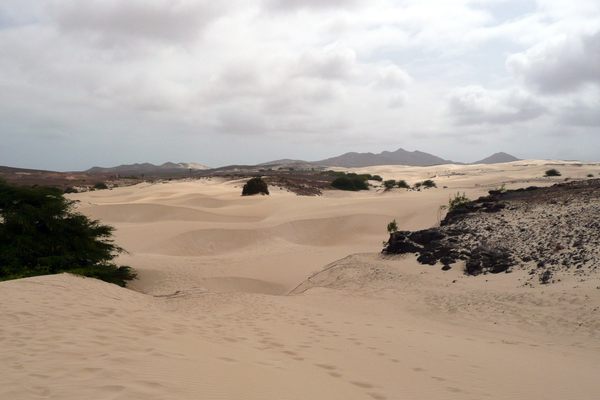Curral Velho
Once a bustling fishing village and trading post, today these Cape Verde ruins provide a home only for seabirds and turtles.
The ruins of the old fishing village known as Curral Velho lie along the southern shore of the Cape Verde island of Boa Vista, the remains of the oldest settlement on the island. Translated from Portuguese, Boa Vista means “good view,” and Curral Velho means “old corral.” And both names are appropriate. The “good view” is unparalleled, and the “old corral” is pretty damn old, going back to the 17th century.
Cape Verde is a collection of small islands, an archipelago about 300 miles off the coast of West Africa that was originally settled by the Portuguese. Boa Vista is the second largest island, but it’s still small — 240 square miles, or about the size of Chicago. There are roughly 8,500 people who live on Boa Vista full time, they are mostly there to service the growing tourism industry. The ruins of the old village of Curral Velho are spread out along the remote and vast stretch of beach known as Santa Monica (named after its more famous cousin in Southern California). The little village was remote even at the time it was settled, and life wasn’t easy for the inhabitants. Navigation around this side of the island was tricky, and fresh water could be scarce in times of drought. But the early inhabitants did have one other thing going for them besides fishing. There is a large salt flat nearby, and the export of salt to the mainland and to the other Cape Verde islands meant they had something to trade.
This kept the village going for a couple hundred years, but in the early 19th century Boa Vista was sacked by pirates at least twice. The Boa Vistans fortified their vulnerable island, but the city they built as protection from further attack wasn’t near Curral Velho, and the little village was eventually abandoned.
The area around the ruins is an important habitat for seabirds and sea turtles who have enjoyed the sleepy stopover for millennia, as a place to lay their fragile eggs. The rapid expansion of tourism has been a threat to both the eggs and to the turtles themselves, valuable for their meat. Efforts have been stepped up by environmental organizations to protect the wildlife, with some real success. They’ve been able to get both the seabird and turtle populations back up after years of decline. Which is only fair since the birds and turtles have been coming here long before any people showed up.
Know Before You Go
The village is on the southern coast, about 15 miles (25 km) southeast of the capital Sal Rei



















Follow us on Twitter to get the latest on the world's hidden wonders.
Like us on Facebook to get the latest on the world's hidden wonders.
Follow us on Twitter Like us on Facebook